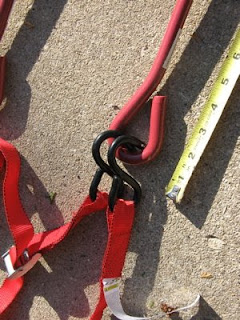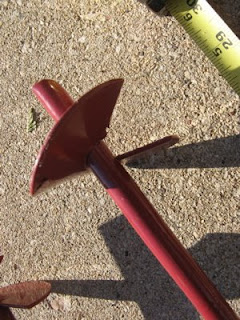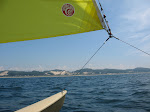I recently read the thread on the Catsailor forums that examined a number of options. The idea is to have an anchor that goes deep enough to hold the boat down (especially if the mast is up), but easy to plant and remove.
One poster there suggested Ace Hardware as a place to buy "auger anchors." I could not find these on the Ace website nor from calling some hardware stores in the Chicago area. It may be that this is more of an item that is only offered regionally.
I did find them at TrueValue hardware's online store for $5.29:

I went into the local TrueValue and bought two for around $6.25 each. They are made of a pretty heavy duty 1/2" rod and the auger at the botton is about 4". They are 30" long. I intend to use a large screwdriver to put through the eye and twist them into the sand.
I also bought two tie down straps with adjustment clamps. I have used these before to secure a canoe to the top of a car and they are the best tie downs I have found. I will update this post once I try them. Here are pictures of the anchors and straps.

























